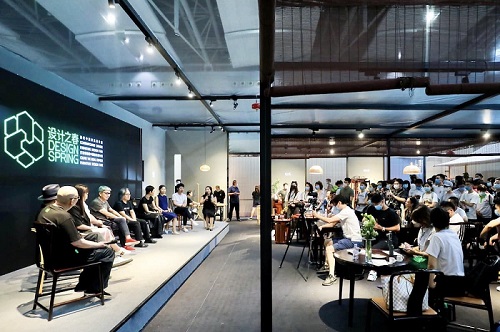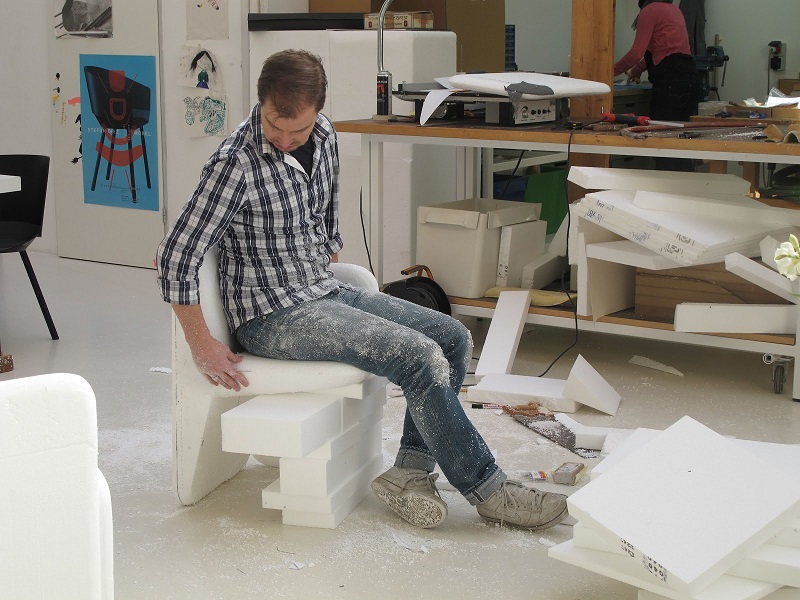2021/04/13 11:30:07
How Furniture Manufacturers Design Furniture
Consumers have diverse tastes in furniture. Some are keen on specific fabrics while others go shopping hoping to find furniture that will fit their space or a particular function. All these factors are determined by one thing; furniture design.
How furniture is designed determines its dimensions, comfort, aesthetics, and functionality. It also significantly influences how well the furniture will sell. This is why furniture exhibitions like the China International Furniture Fair have become exceedingly popular. They present an opportunity for manufacturers to discover furniture designs from all over the world and learn the new trends in the industry.
The common thread in all this is that furniture design is fundamental. So, what exactly does this make or break process entail? Let's find out.
Design Processes
The furniture design process is layered in several stages. They include:
Research

Source: CIFF
Furniture design research can be non-specific or bespoke. In non-specific research, a furniture designer is not bound to a client brief. They would simply be looking for inspiration or an understanding of what type of furniture is currently in high demand. The information they find will help them design furniture pieces that express their creativity but are also appealing to their target market.
Researching for bespoke furniture involves investigating trends like suitable dimensions or material options to fulfill a client brief. For instance, if a client requests furniture for a baby daycare, the designer would need to explore:
- Baby-friendly fabrics; preferably hypoallergenic and performance fabrics
- Color schemes
- Dimensions; in relation to the children and the space
- Style
- Safety recommendations for child-friendly furniture like rounded corners
The internet, magazines, visiting furniture showrooms, and furniture fair design events are all great research avenues. It depends on what is accessible to a designer.
Design Concept
A furniture design concept is a basic idea of the type and style of furniture that you are aiming for. In some instances, a designer can come up with a design concept based on a problem that needs to be solved. Take office chairs, for example. Staff members have different heights, so how do you make their designs suitable for different people? Adjustability. The furniture designer would thus center their design around this concept of adjustability among other features.
A single piece of furniture can be based on one or many concepts. Once the general idea has been established it is used to make a sketch and details are slowly added to it as more ideas come along. Sketching helps in visualizing the concept better and getting a feel of whether it is viable. Other ideas regarding color, materials, and decorative touches can also be suggested at this point.
CAD

Sketching or drawing on paper is referred to as 2-dimensional drawing. It is helpful but only gives a limited view of the design. Computer-Aided Design(CAD), on the other hand, gives a 3D view of the design and is thus a more preferable design tool.
In this stage, the furniture designer uses applications like CAD Pro Design software to draw the design in more detail. Design features like the dimensions of the frame and the upholstered piece are all specified. In other words, a complete CAD sketch comprises all the design details as they will appear on the actual piece.
Making the Mould and Furniture Prototype
A mold is a template of the furniture design. It is made using technology like CNC machines in the exact dimensions that the furniture piece will be manufactured in. The frame produced from it is padded with materials like polyurethane foam and upholstered. This final product is known as a furniture prototype.
Molds and prototypes are made to provide a tangible representation of the furniture design. This process also provides an opportunity for design and engineering teams to evaluate the manufacturability of the structure. It gives them a sense of the production costs and the materials that would be suitable.
Testing

A furniture test is an analysis of the overall functionality and viability of a piece. Some key aspects to test for include:
- Stability - can the structure stand on its own?
- Weight-bearing - how well does the structure hold up when weight is exerted on it?
- Comfort - does it provide a pleasant user experience?
- Structural weight - the furniture piece should not be so heavy set that it can not be moved
- Fireproof- how does the furniture react to fire?
Most of these tests are practical and not technology-driven. They do, however, require a keen eye and some measuring tools to help get the parameters right. Additionally, the tests performed are handled case-by-case because wooden furniture, for instance, varies greatly from plastic.
If any feature is found to be below standard, adjustments are made and the prototyping process is repeated. This cycle can happen a few times until the design has been perfected.
Conclusion
Furniture designs are constantly evolving and it is important to keep up with them. As a furniture manufacturer, new trends inspire you to create styles that are in season. On the flip side, for individual buyers and businesses like hotels and restaurants, new furniture designs offer alternative solutions. They might just provide the extra comfort, utility, or affordability you have been looking for.
Currently, China is the largest exporter of furniture in the world. It is arguably the best place to tour and explore endless furniture designs for all categories of furniture. Consider attending the China International Furniture Fair held in Guangzhou in March and Shanghai in September. It brings together China furniture manufacturers and thousands more from across the globe. Guangzhou is also close to the Foshan furniture market which is the largest one. You can easily explore both CIFF and Foshan market in one trip. Save the dates.
Looking for the latest furniture designs and the best suppliers?
0/500
All comments
No data.